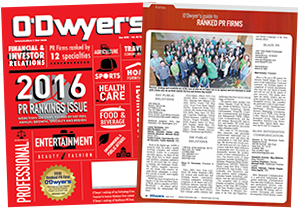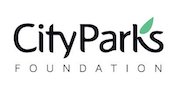|
|
Audiences, in general, are no longer interested in simply being a “target” for a brand. Whether they’re in the market for a new appliance, deciding where to go to college or being treated for a chronic illness, people want to interact with brands that engage with them in a way that feels real and lasting.
|
|
For example, Millennials — the demographic now in their mid-teens to mid-30s who possess an ever-growing buying power — flat out do not trust brands. They report that they pay little attention to company messages in the form of ads, whether on a highway billboard or on their phones. To gain an audience’s trust, we must build an authentic connection with them.
Science has taught us that while complicated, trust building can be understood. At Spectrum, we describe the three core building blocks of trust as: authenticity, credibility and provability. And we believe that PR can uniquely help organizations achieve this “trust triumvirate,” alongside their broader business goals.
Authenticity
The most important part of public relations is not working with the media, securing a news article, re-tweeting a blog post or planning an event; it’s the strategic process that informs these and other communications activities. Our goal in PR is to support our clients by raising awareness of issues, driving new conversations and shifting landscapes. But to do this, we must build trust by being real.
Authenticity is found in the sweet spot between a company’s goals and the needs of the external environment. What is the audience experiencing? What can an organization do to really make a difference in their lives? For example, when interacting with physicians, we need to know what their perceptions are, what they’re up against, and what they need to help them take better care of patients.
When working with members of the media, we need to be a resource to them, not just reach out when we have a story to place. To do this, we must delve into the world of others and draw them out. As much as we want to talk, we must also listen. In listening we discover opportunities to create meaningful conversations that can change the game for our clients.
Where we engage with our audiences impacts authenticity as well. There’s a tendency for companies to say, “Hey, Competitor X is on Instagram. We should be on Instagram.” But remember, we’re going for authentic communications that align with an overarching strategy. A good communications partner is one who understands what each channel can deliver, and will help find the ones that are true to the corporate personality and deliver on the business goals.
Credibility
Can your company be counted on to deliver on its commitments? Do you claim to have a focus on patients or do you create an internal culture that enables employees to live a patient focus?
Brand loyalty is created by engaging with audiences in an authentic and credible way. While you can tightly control your message with a Google ad or a 30-second television spot — and perhaps a lot of people will see it — a brand will benefit over time from also building strong relationships with respected external individuals, organizations and patient communities. By forming and nurturing relationships, a company’s reputation as a reliable partner will help build brand trust.
It’s commonly understood in today’s digital, information-filled world that what a company says about itself doesn’t matter half as much as what others say about it. People turn to influencers and third party groups for trusted guidance as they make decisions about purchasing a product or choosing a healthcare provider.
And, these relationships must be genuine and built over time. A healthcare company must involve key stakeholders throughout the process, and allow for external input. By showing again and again that it follows through on commitments, an organization builds brand ambassadors that will testify to the company’s reliability when it needs it the most.
Provability
Provability is our term for demonstrating competence. It’s the ability of a company to demonstrate the specific expertise and experience that allows it a seat at the table. Provability can be demonstrated through data communications, scientific credentialing and thought leadership. Through PR, a healthcare organization can showcase its commitment to move a new science or technology from promise to clinical benefit for patients, and build trust as a CEO takes a stand on an important issue or drive discussion in the media around new and compelling advances in the field of science. How an organization behaves and leverages its expertise to benefit its stakeholders has a tremendous impact on its brand.
Possessing an understanding of internal needs and external environments, PR is uniquely positioned to ensure an organization’s strategy-first communications plan is true to its values and focused on both short-term needs and long-term goals.
Trust is a long game. It takes years to build and seconds to destroy. In today’s world, being a trusted partner in helping to address the weighty issues facing our healthcare system is essential to success. The key to building trust is a long-term brand strategy that embraces authenticity, credibility and provability.
* * *
Jonathan Wilson is president of Spectrum and GLOBALHealthPR.




 Navigating the delicate balance between the art of perception and the science of strategic communication is paramount for fostering a positive corporate reputation.
Navigating the delicate balance between the art of perception and the science of strategic communication is paramount for fostering a positive corporate reputation. City Parks Foundation is looking to hire a firm to handle PR connected to its arts programming, which includes New York City’s largest free outdoor festival, SummerStage.
City Parks Foundation is looking to hire a firm to handle PR connected to its arts programming, which includes New York City’s largest free outdoor festival, SummerStage. Sacramento seeks a PR firm to develop a multi-media campaign to generate awareness of its Cannabis Opportunity Reinvestment and Equity program.
Sacramento seeks a PR firm to develop a multi-media campaign to generate awareness of its Cannabis Opportunity Reinvestment and Equity program. Fathers are drastically losing market share, particularly to mothers, but also to grandmothers and even to teenage babysitters and complete strangers.
Fathers are drastically losing market share, particularly to mothers, but also to grandmothers and even to teenage babysitters and complete strangers. Management's behavior and the ways in which organizations impact society are now widely responsible for our perceptions of companies, according to a global study released by FleishmanHillard. (7 reader comments)
Management's behavior and the ways in which organizations impact society are now widely responsible for our perceptions of companies, according to a global study released by FleishmanHillard. (7 reader comments)


 Have a comment? Send it to
Have a comment? Send it to 
No comments have been submitted for this story yet.